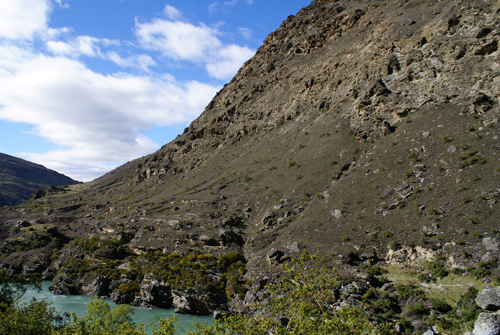
|
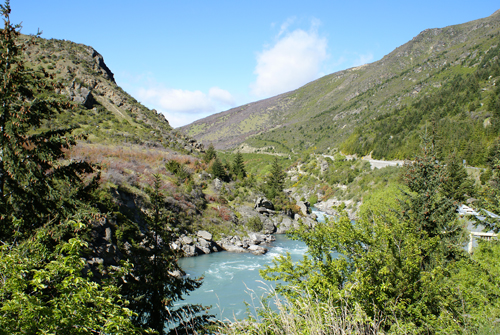 |
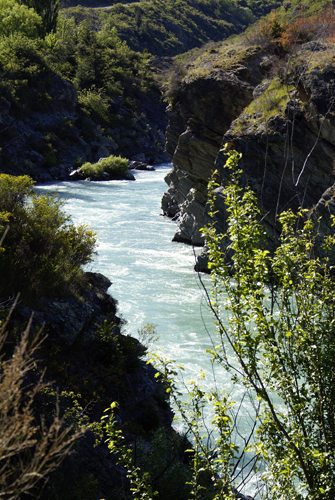
|
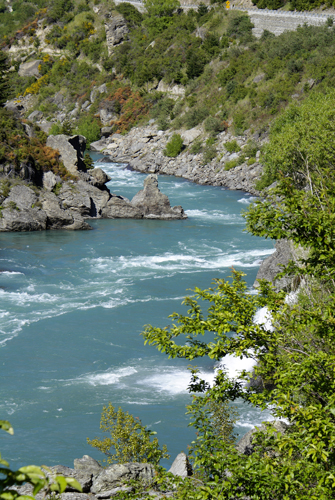 |
The
Kawarau river runs through a deep gorge and here you can see the bridge
that started the bungy jumping craze. While I was silly enough to
give it a try, I wasn't silly enough to pay $160 for the
privilege. We did watch one woman from a Chinese bus tour jump;
to great applause from the rest of her bus tour. After spending
some time watching the action, we headed into Queenstown.
|
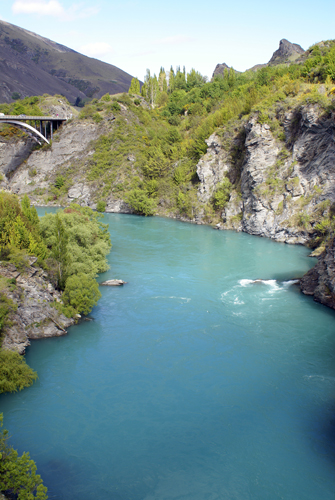 |
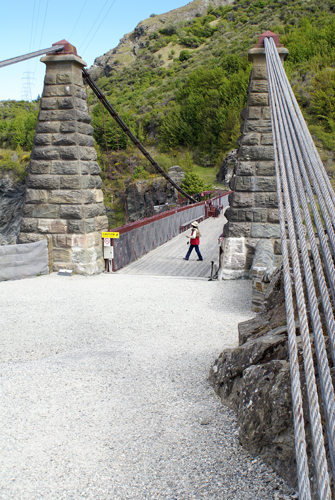 |
|
Queenstown
Situated on the northeast shore of Lake Wakatipu with the Remarkables
mountain range behind, Queenstown enjoys an incredably scenic
setting. Since the 1970s, it has developed from a sleepy lakeside
town into a leading international resort and a world centre for
adventure sports, including bungy jumping. Like most towns in the
area, Queenstown was established during the 1860s gold rushes.
Although the pace of development in Queenstown has been dictated by the
demands of tourism, it still has the feel of a small town and proudly
maintains its links with the days of the gold boom.
|
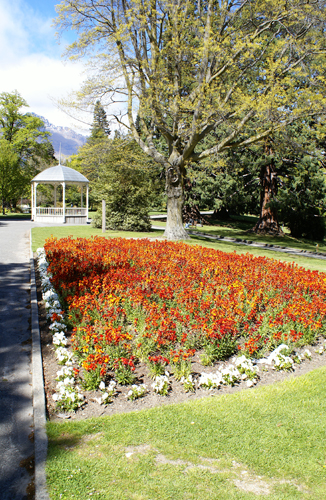 |
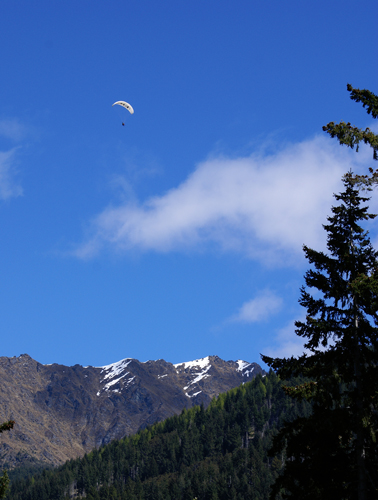 |
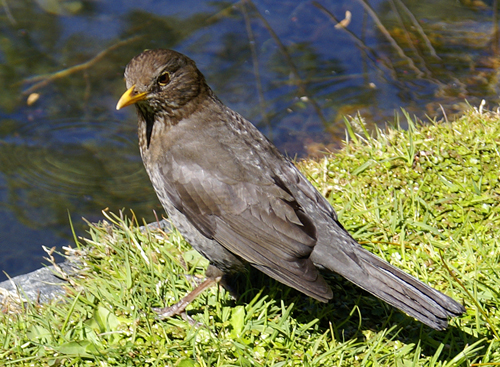 |
Queenstown Gardens are set on a glacial moraine peninsula. They
are surrounded by stands of large fir trees and contained broad lawns
and rose beds. The gardens provide a quiet oasis in an otherwise
busy tourist town. An ice skating rink, sporting greens, a
children's park and a walkway around the point are other attractions
|
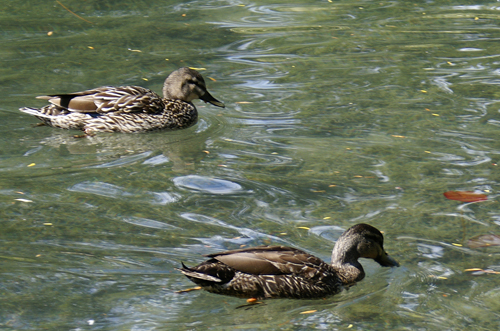 |
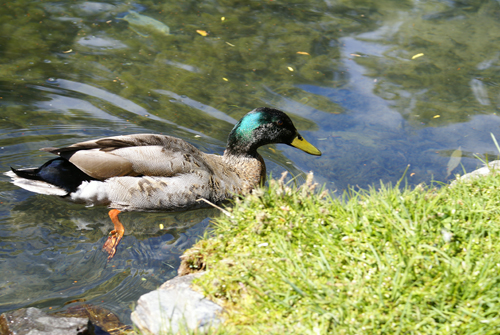 |
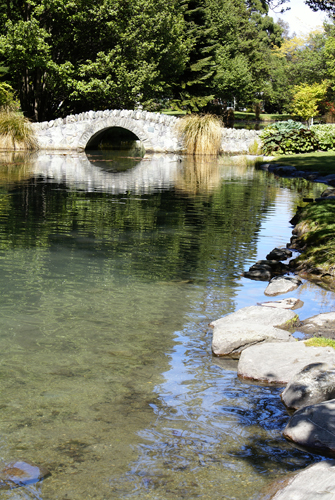 |
The birds like to hang with thier peeps around this pond in the centre
of the gardens.
At the end of the gardens sits the local lawn bowling club.
|
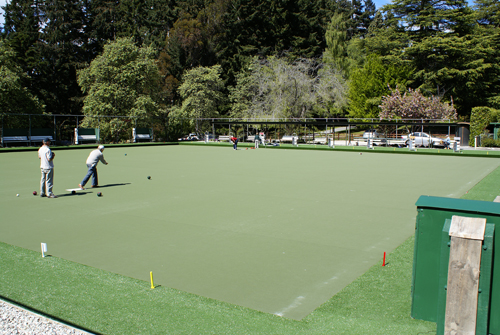 |
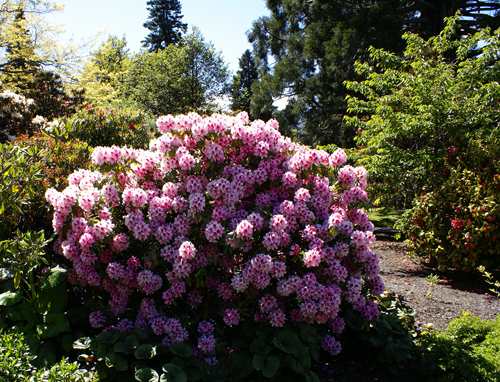 |
Adventure sports are the life
blood of Queenstown. For the entire time we were there we saw a
series of parasailors coming from the top of the mountain and landing
in a field in the centre of town.
|
|
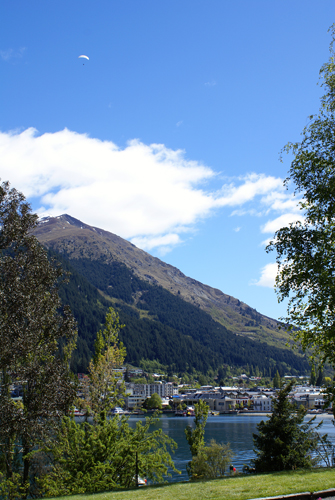 |
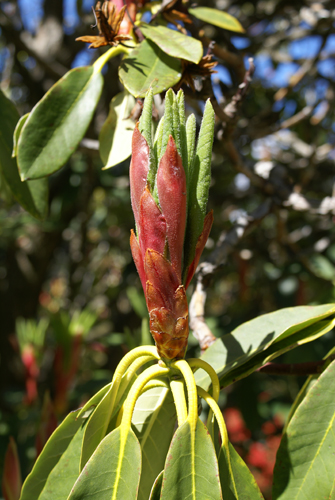 |
This is looking South along Lake
Wakatipu.
|
This is looking into Queenstown
Bay as we took the harbour walk into town from the gardens.
|
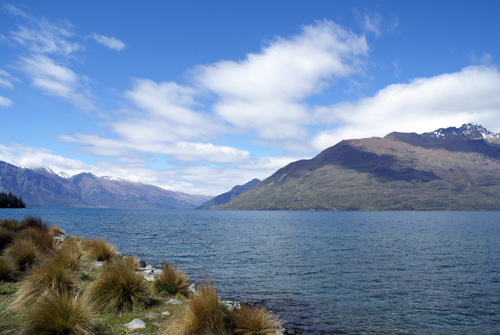 |
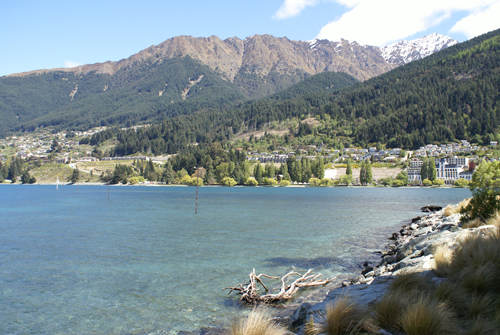 |
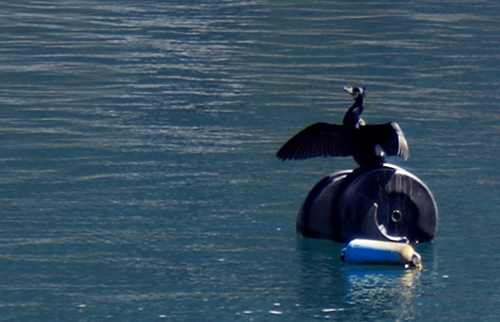 |
 |
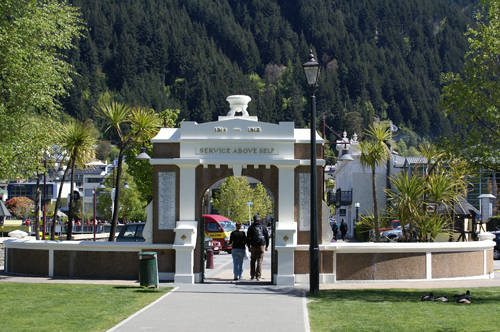 |
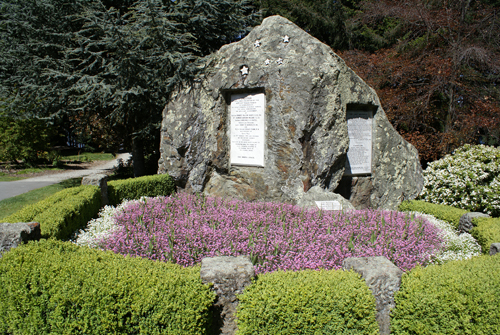 |
Above is the entry into downtown
from the harbour walk. The arch is the local war memorial.
Below is a statue I call "man with sheep," but is actually William
Gilbert Rees, 1827-1898. Rees was an explorer, runholder and the
first European settler and founder of Queenstown. With his wife,
Frances, he settled near this point in 1861 and built the first
buildings by the lake. When gold was discovered in 1862, Rees was
paid compensation of 10,000 pounds for the part of his farm that
included Queenstown and he moved to Kawarau Falls.
|
This is a memorial to Captain
Robert Falcon Scott, R.N.; Dr. Edward Adrian Wilson, F.Z.S.; Captain
Lawrence E.G. Oates, Inniskilling Dragoons; Lieutenant Henry R. Bowers,
R.I.M.; and Petty Officer Edgar Evans, R.N. who reached the south Pole
on 17th January 1912, and perished on the return journey.
|

|
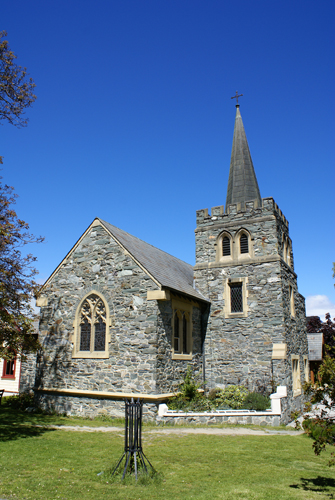 |
After
buying a small ceramic piece from a local art gallery and stopping for
a coffee at the ubiquitous Starbucks we continued south on Hwy 6 around
to the south end of Lake Wakatipu to Kingston.
|
|
|
 |
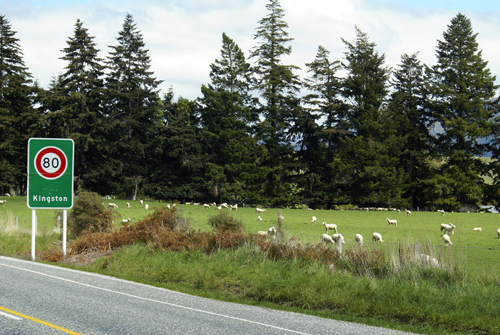 |
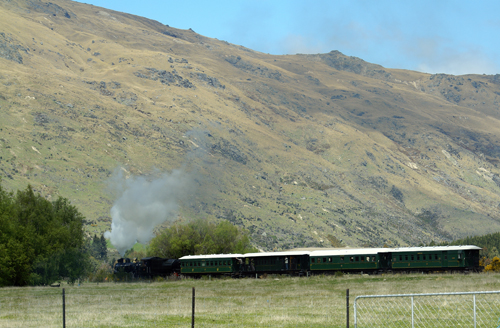 |
For a
long time the little settlement of Kingston served as a railhead and
steamer terminal for travellers heading toward Lake Wakatipu from the
south. Nowadays, its main claim to fame is the Kingston Flyer, a
restored vintage steam train with several coaches and staff in period
costume which takes passengers on a 75 minute return trip. The
flyer was just leaving town as we pulled in.
|
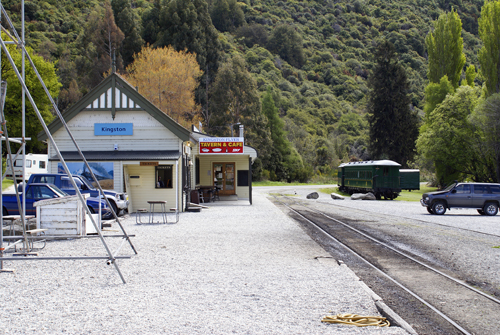 |
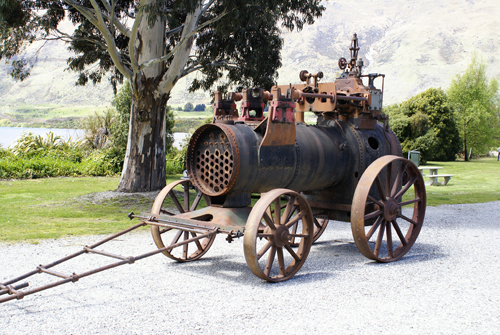 |
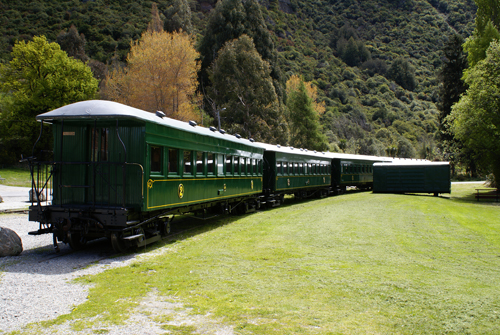 |
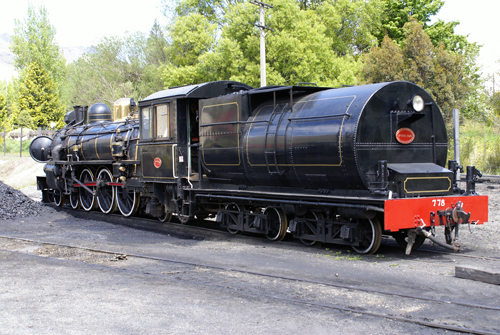 |
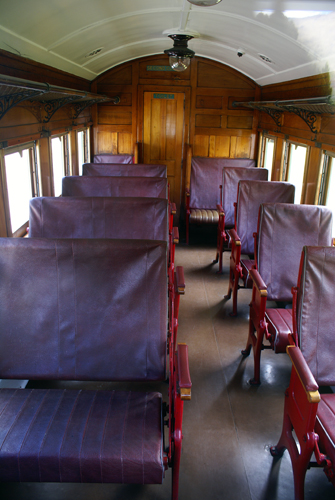 |
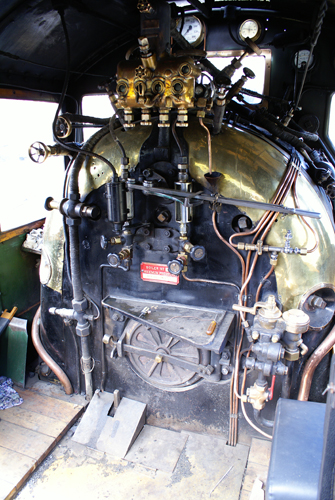 |
 |
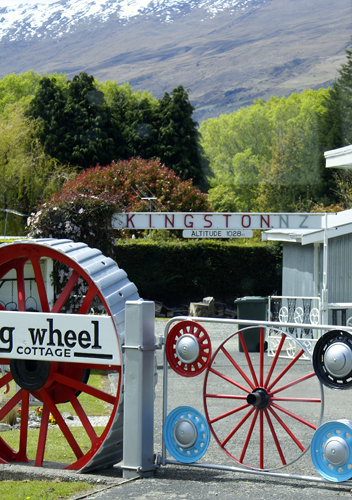 |
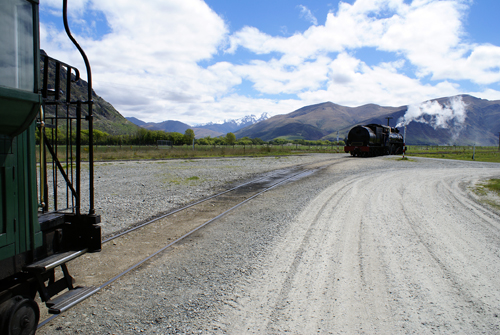 |
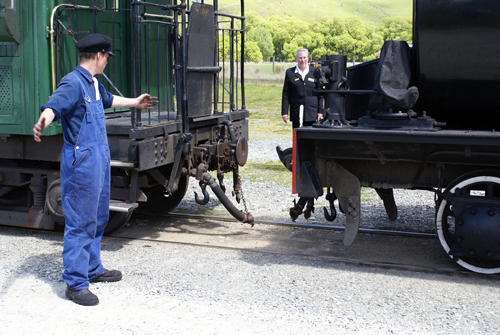 |
 |
After walking around Kingston for a bit we headed down the road and
caught up to The Kingston Flyer in Lumsden.
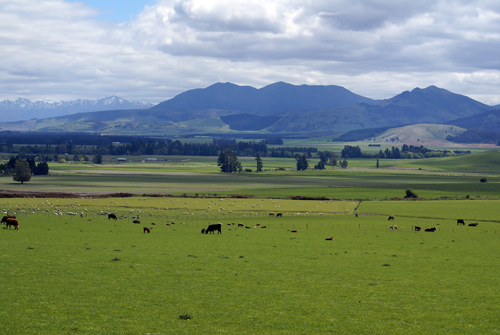 |
Invercargill
|
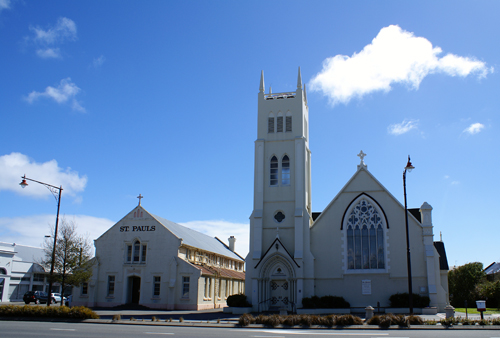
|
New Zealand's southernmost city,
and the commercial hub of Southland, Invercargill is a well-planned
city with wide, tree-lined streets and many parks and reserves.
Settled in the 1850's and 60's by Scottish immigrants, the city's
cultural links with Scotland are reflected in the streets named after
Scottish rivers and in its many historic buildings. To the west
of the city are several sheltered beaches and walking tracks.
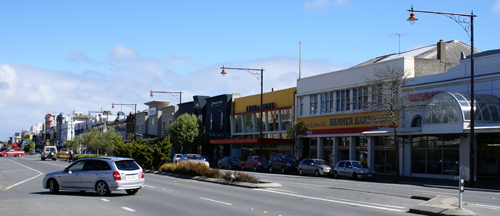 |
The water tower is the city's
most distinctive landmark, standing 42 meters high it is made of red
brick and was completed in 1889 for the public works department.
It is a fine example of Neo-Romanesque industrial design of the time.
|
|
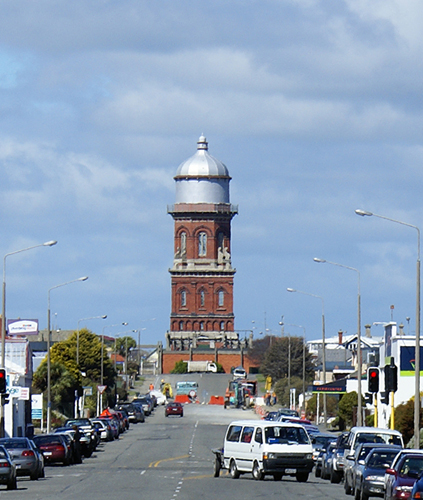
|
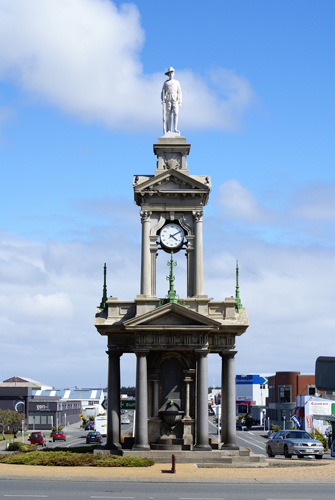 |
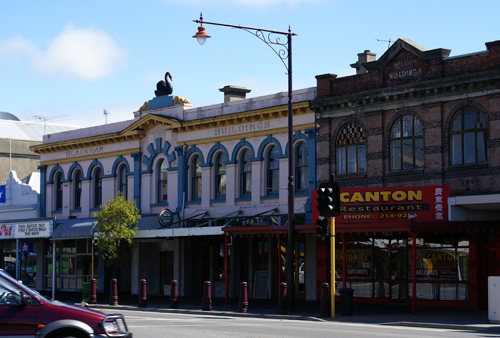
|
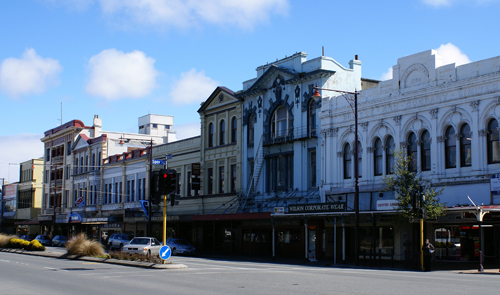 |
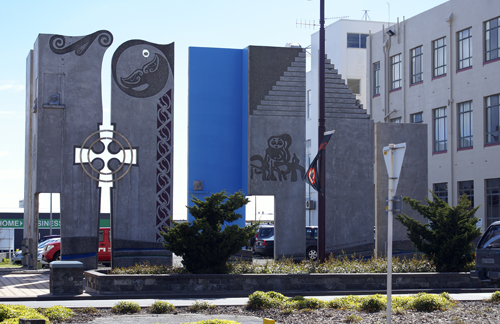 |
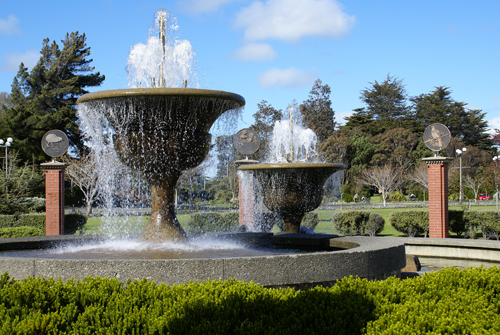 |
The city
is a ground hugging collection of two and three story buildings.
Many of the storefronts are empty which seems to show that it may have
been more prosperous in the past. The jewel of the city is
Queen's Park. The park is a botanical reserve featuring formal
gardens, including rose gardens and the extensive Steans Memorial
Winter Garden. There is also a small wildlife park containing
deer and wallabies, an aviary, and an 18 hole golf course.
Because in the south it was still very early spring there were not a
lot of flowers in bloom throughout the garden, but we did arrive in
time to spend some time in the Winter Gardens before they closed for
the day.
|
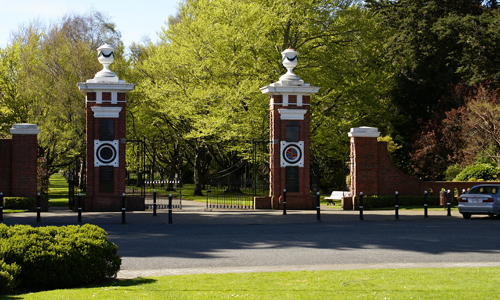 |
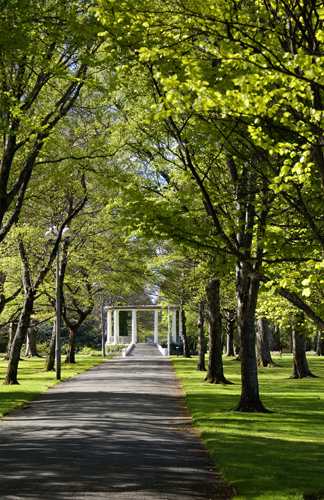 |
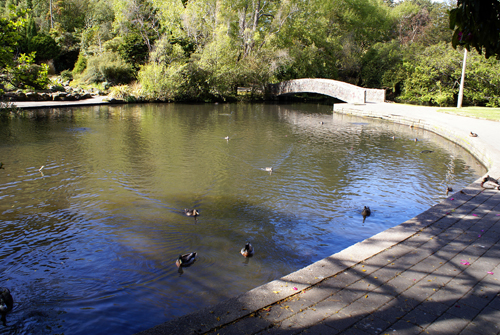 |
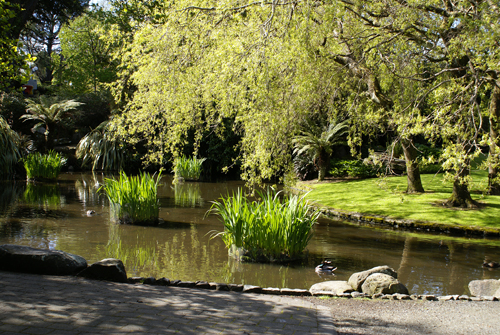 |
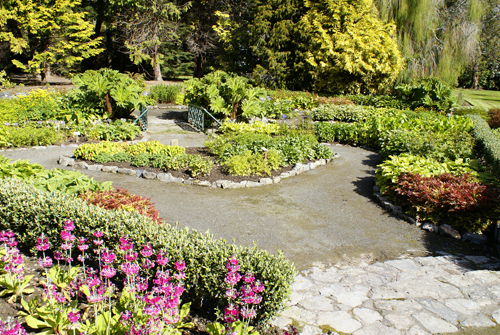 |
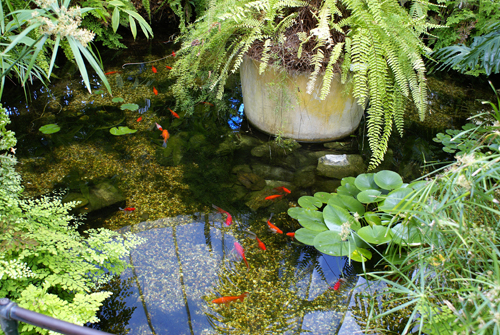 |
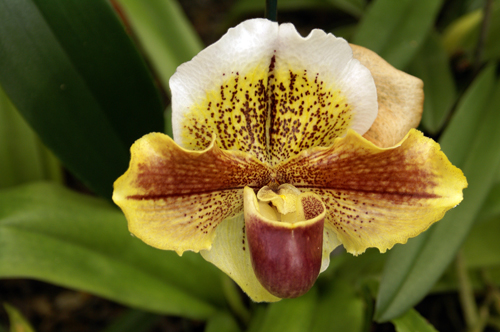 |
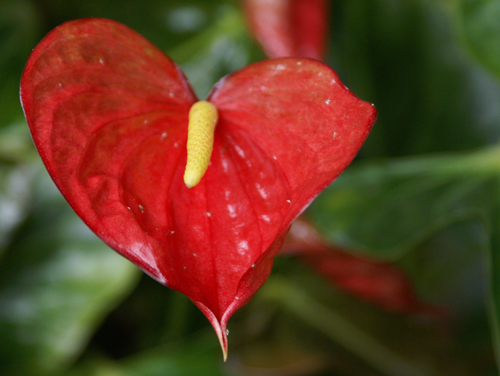 |
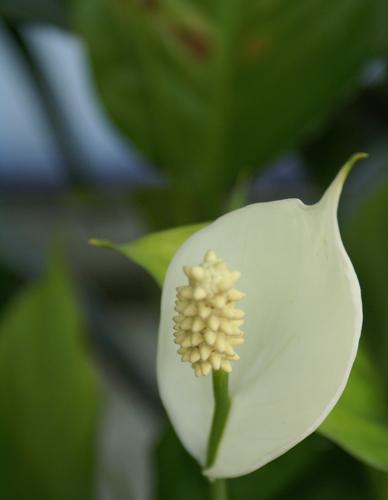 |
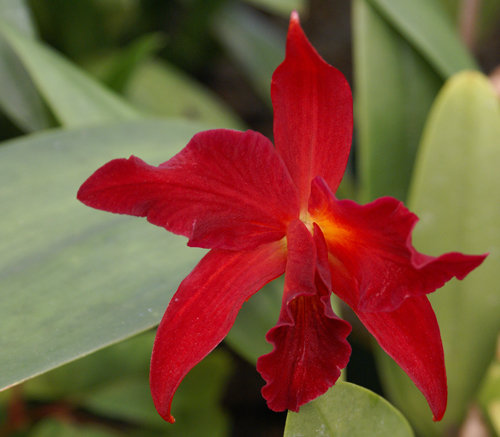 |

|
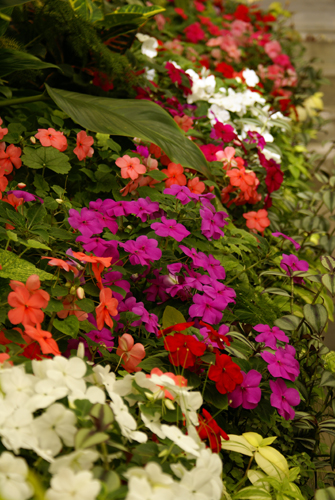 |
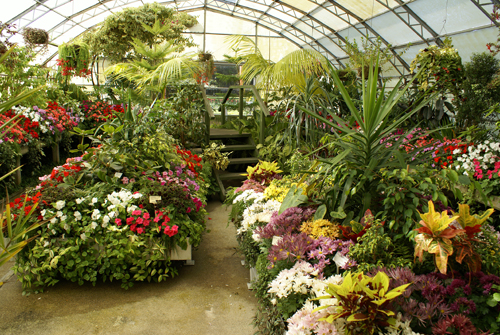 |
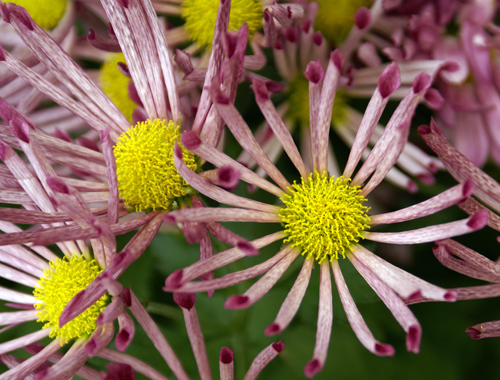 |
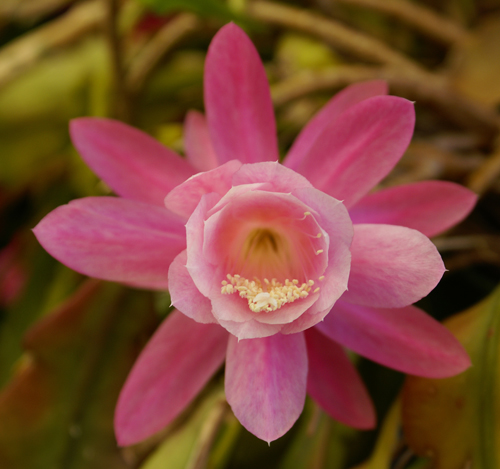 |
 |
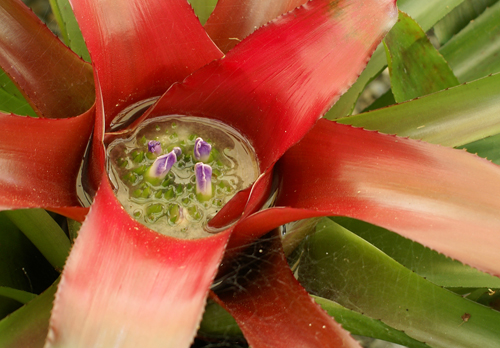 |
The aviary was open later than the winder gardens so we also got a
chance to have a look at their collection of birds.
|
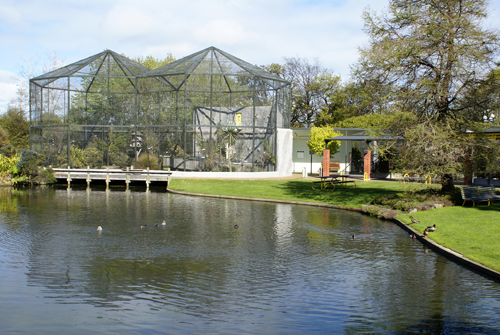
|
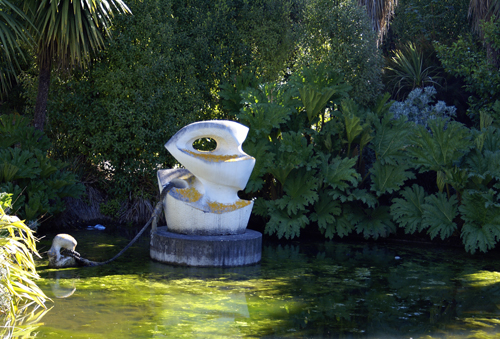 |
 |
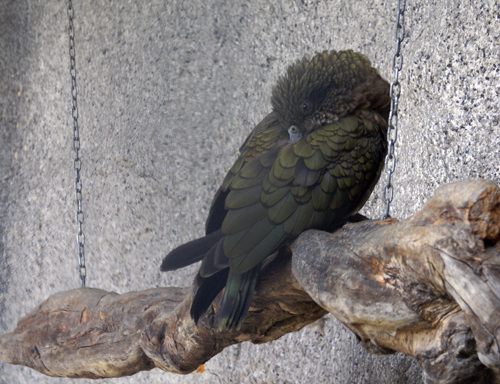 |
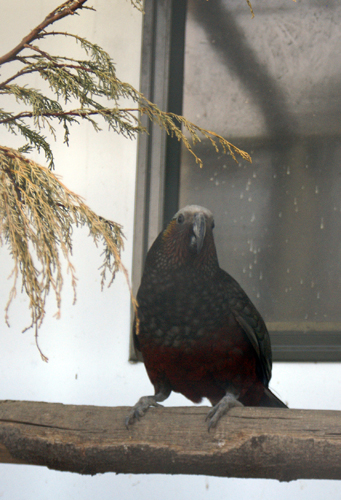
|
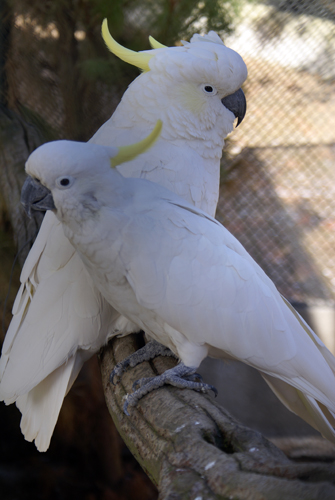 |
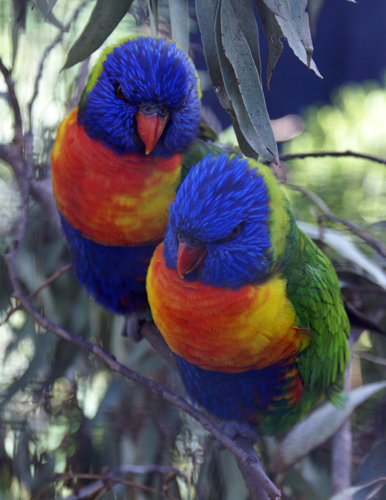
|
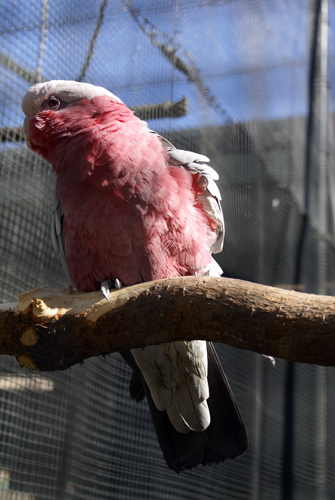 |
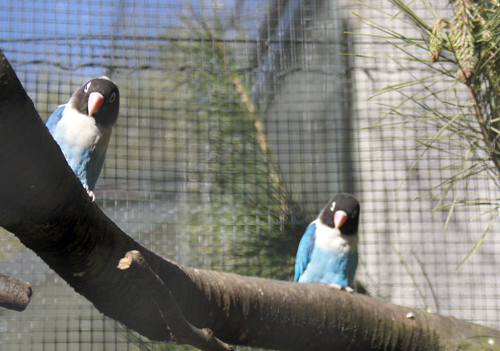 |
 |
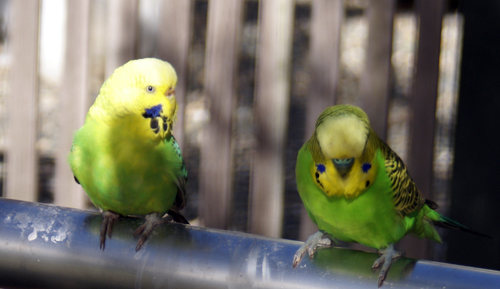 |
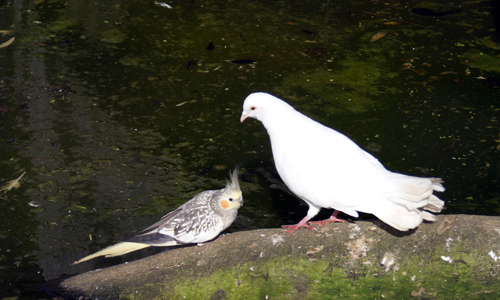 |
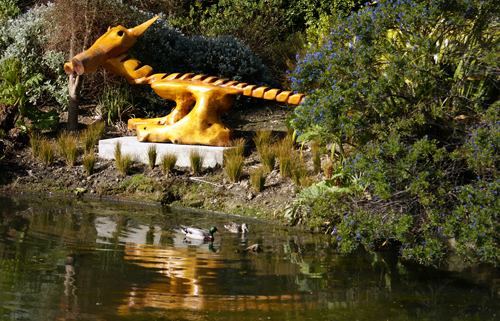 |
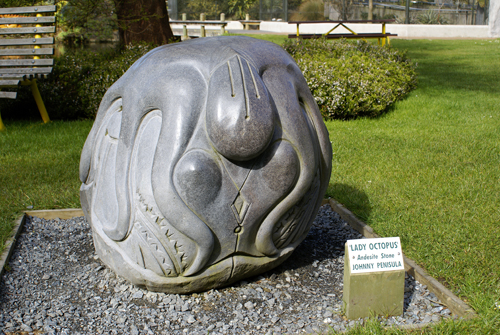 |
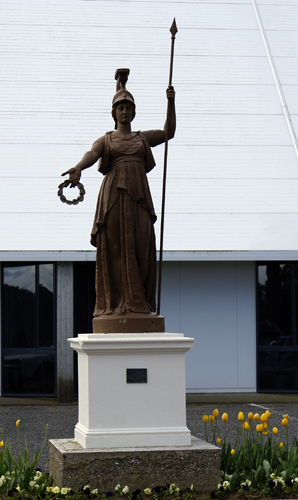 |
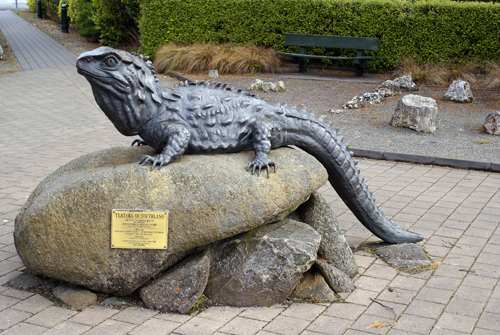 |
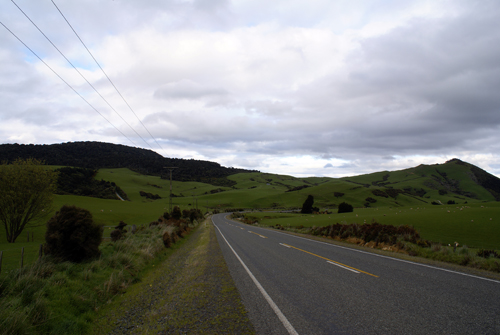 |
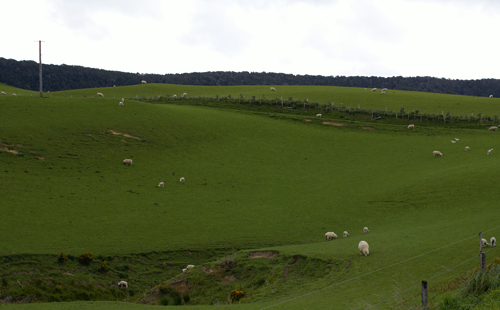 |
Having travelled the entire length of Hwy 6 we picked up highway 92
(part of the Southern Scenic Tourism Route). The rolling hills in
this area were perfectly manicured by the sheep that grazed peacefully
on them.
Just before passing through the village of Fortrose we stopped to look
at Toetoes Bay. Looking south from here there is nothing until
Antarctica. We stopped for the night in Owaka.
|
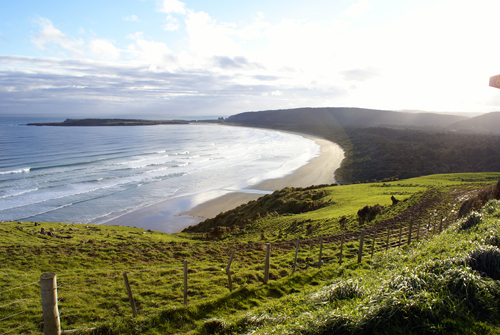 |